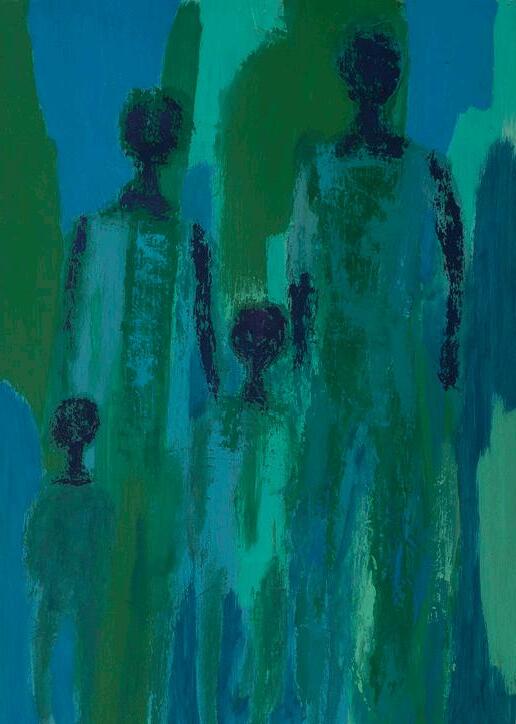
4 minute read
Celebrating 75 Years of the Georgia Museum of Art
The museum at the heart of fine art in Athens
An invisible thread weaves through each gallery of the Georgia Museum of Art. Paintings, artifacts and decorative pieces inspire patrons to stop, watch and interpret the meaning behind each one. The thread binds each person to the art, and this mindful connection gives each piece life and sparks inspiration.
Advertisement
The museum opened its doors to the public in 1948 with 100 paintings donated by the museum’s founder, Alfred Heber Holbrook. After retiring from practicing law in New York at the age of 70, Holbrook dived into the world of art — sparked by his interest in frequenting museums. After meeting the University of Georgia art department head, Lamar Dodd, and taking classes, he was inspired to found the Georgia Museum of Art in 1945.
As the museum celebrates its 75th anniversary this year, its permanent collection of nearly 17,000 pieces continues to grow. Patrons can enjoy the collections for free by requesting a ticket on the museum website and spend as little or as much time in the museum as they like.
Hillary Brown, director of communications for the museum, notes that the works of art offer visitors free inspiration. Students can take a mental break in between classes and get inspired by the history and beauty of each piece.
“Come out, enjoy some slow viewing, see something interesting, beautiful and get educated,” Brown said.
Thirteen galleries are currently on display and include works from early American,
Asian, European and African artists in the permanent collection. Sprinkled in the collection are famous pieces from familiar names like Georgia O’Keeffe, Winslow Homer and Pablo Picasso.
Some temporary exhibitions include works from 17th century Spanish baroque painters, a gallery of art by African American artists donated by Larry D. and Brenda A. Thompson and the most recent installation of works from the Princeton University Art Museum called “Object Lessons in American Art”, which is on display until May 14, 2023.
The museum also features a sculpture garden in the outdoor gallery exhibition, featuring work only from women sculptors, including the colorful, geometric works by Jane Manus.
Michael Lachowski, who works in public relations for the museum, said it was named Georgia’s official art museum in the ‘80s for its extensive collection and efforts to preserve art education — and this status attracts visitors to Athens from all backgrounds.
“Standing with and being in the presence of original objects of art can be just its own experience,” Lachowski said. “It can be educational, and it can be historic, but it’s really just a genuine experience that isn’t comparable to going on a computer, on a smartphone or in a book or magazine.”
As Lachowski traced the timeline of each piece in the rooms, he pointed out which ones are most notable of the museum’s collection, starting with the Italian Renaissance and ending with modern works in the temporary gallery.
These works of art demonstrate the diverse collection housed in the museum. Each piece offers a slice of unique history that allows the viewer to connect to the artist, interpret their thoughts and travel to that point in time. This personal connection to the piece gives the viewer inspiration, and in turn, gives meaning to its creation.
1. “Madonna and Child” by Marco Basaiti
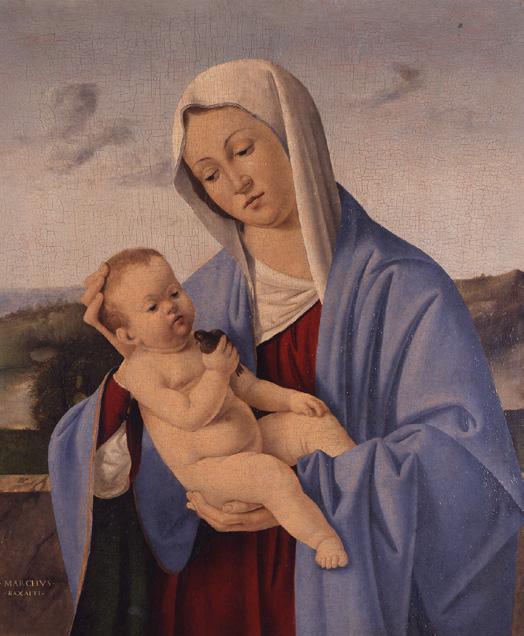
This painting by Basaiti, dating to around 1500, features the Madonna with baby Jesus Christ, who is painted holding a bird. At the time this was symbolic of foreshadowing his death as an adult.
2. “Tallulah Falls” by George Cooke
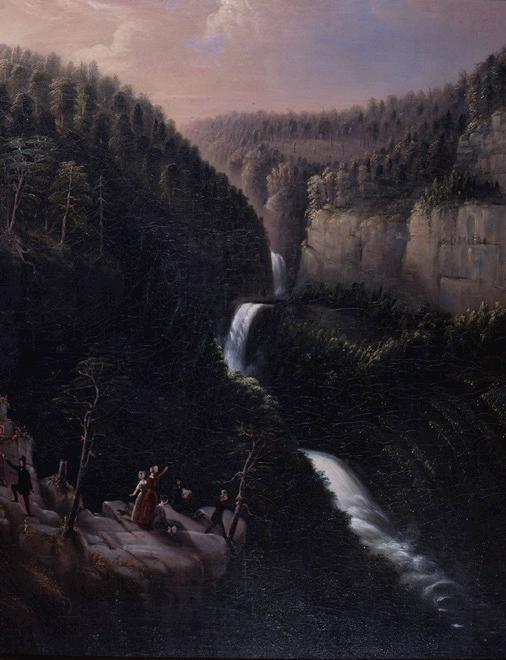
Tallulah Falls in the mountains of northeast Georgia has long been a popular attraction for settlers and travelers awed by the beauty of the falls. In 1841, Cooke captured this beauty and features three of the four falls from a high vantage point, which toys with the viewer’s sense of anxiety — starkly contrasting the reward of viewing the falls in its full beauty at that height.
3. “La Confidence”by Elizabeth Jane Gardner Bouguereau
Bouguereau challenged the male-dominated art field in the late 1800s, dressing as a man to attend an all-male drawing school in France. She represents a strong female force and her work “La Confidence” from 1880 depicts two women sharing a secret under a divine icon, promoting themes of privacy, trust and femininity.
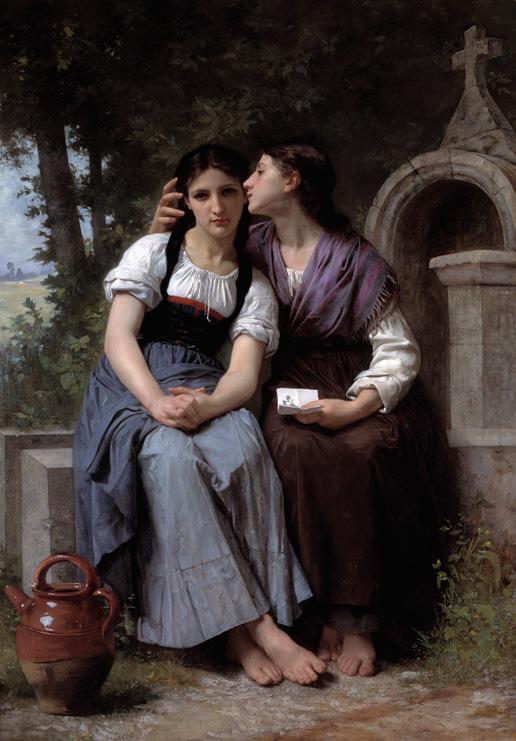
4. “Red Barn” by Georgia O’Keeffe
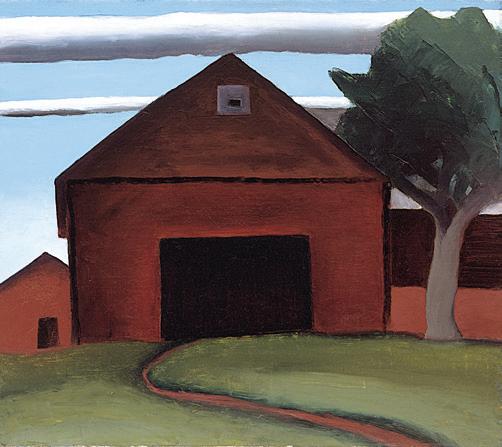
O’Keeffe’s 1921 painting of the red barn in Lake George, New York, belonged to renowned photographer and art promoter Alfred Stieglitz’s family estate. O’Keeffe and Stieglitz began working together in 1916 and eventually married in 1924. Her famous painting focuses on composition and draws on inspiration from the works of Arthur Wesley Dow and his aesthetic art philosophy.
5. “Self Portrait” by Lamar Dodd
Dodd painted this self-portrait in 1936. Dodd was born September 22, 1909 in Fairburn, Georgia. He was appointed to UGA’s art school in 1937 as part of a national movement to bring artists to school faculties. In his time, he consolidated all visual arts teaching into one department and even enrolled the school’s first graduate master’s students.
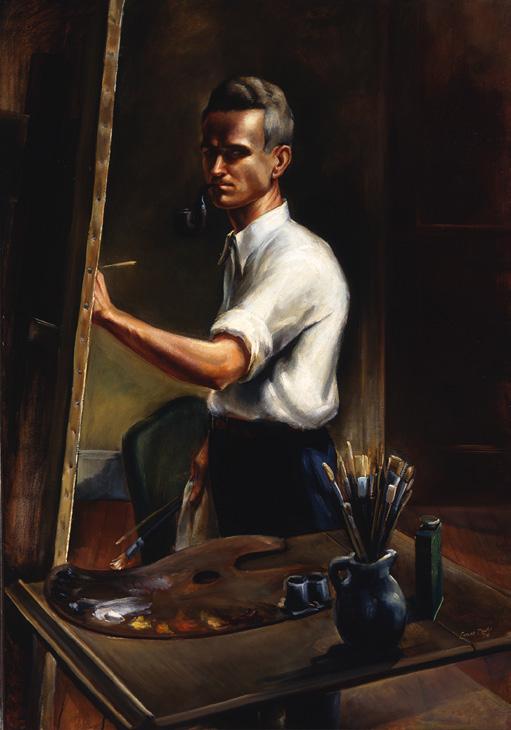
6. “Children at Play” by Jacob Lawrence
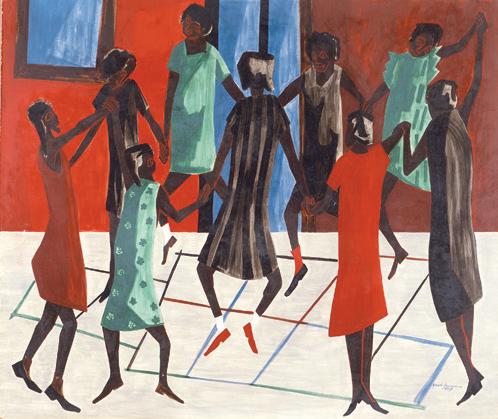
In 1947, Lawrence, a Black artist, used abstract design to illustrate an everyday scene in Harlem following World War II. Lawrence fills the painting with the scene of people and doesn’t include a horizon line to mimic how the scene would be viewed on the streets of Harlem.
7. “Juke Joint” by Vertis Hayes
Social realism piece “Juke Joint” by Black artist Vertis Hayes in 1946 features a juke joint somewhere outside of Memphis, Tennessee. A juke joint is a southern establishment known for good music, dancing and a place of community. The composition of this painting centers around the joint, and it seems to come alive with the curved lines and scenes of people.
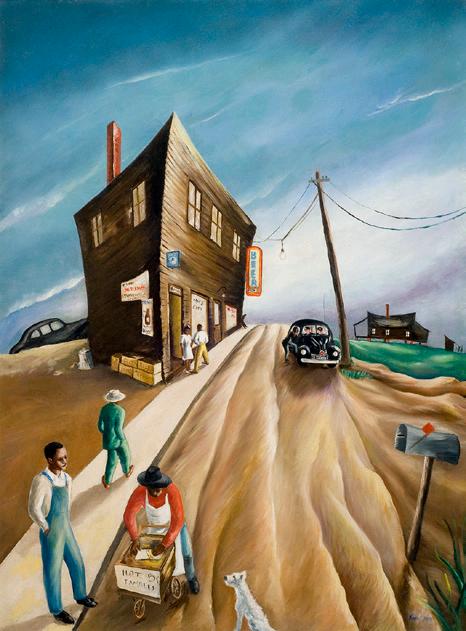
8. “Dusk”by Ellis Wilson
“Dusk” painted by Black artist Ellis Wilson around 1950, is an abstract of silhouettes that represent a Black family. It is displayed in a room with art of the same time period, but the art mostly features white subjects and artists. “Dusk” brings representation of Black families to the room’s history.
